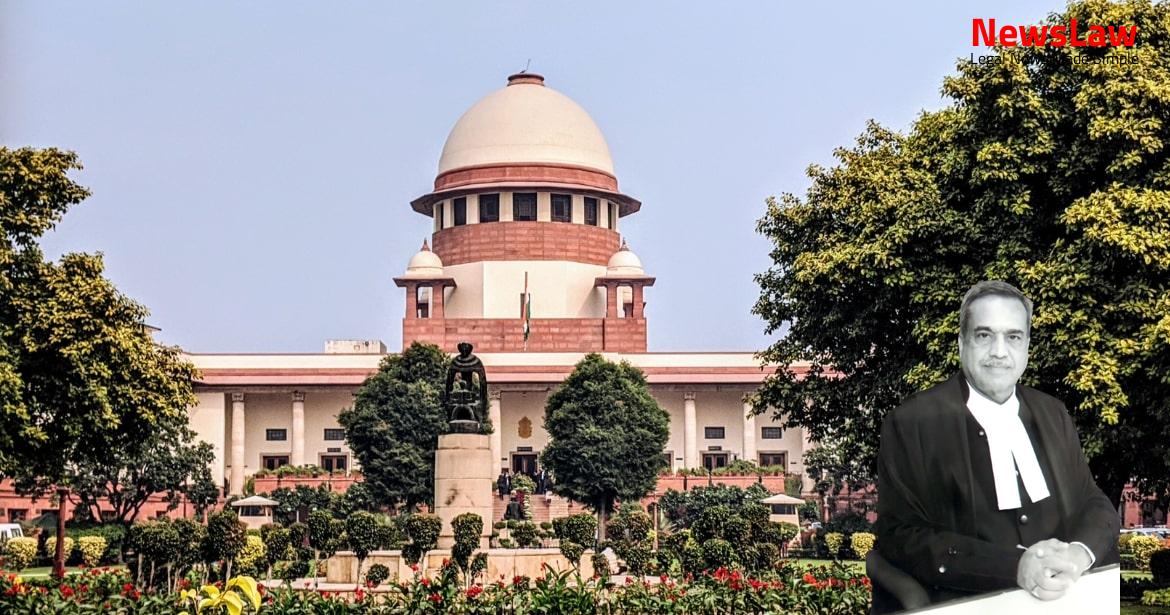Dive into the court’s detailed legal analysis on the interpretation of Section 10A of the Insolvency and Bankruptcy Code. This analysis sheds light on the application of the provision in cases where the application was filed before its enactment date. Understanding the nuances of Section 10A is essential for grasping its impact on insolvency proceedings. #LegalAnalysis #IBC #InsolvencyProceedings
Facts
- The appellant filed an application under Section 9 of the IBC due to default in operational dues payment.
- The appellant claimed a sum of INR 104,11,76,479 as due and payable to him upon resignation.
- The Incentive Agreement was amended on 17 April 2015 with further amendments through a Side Letter on 20 April 2015.
- Appellant submitted resignation on 21 January 2020 detailing entitlements under Agreements.
- Respondent acknowledged resignation on 28 January 2020 and requested continued employment beyond notice period.
- Email communication on 27 March 2020 confirmed payments due to the appellant except for one point.
- Final reminder sent by the appellant on 27 April 2020, three days before the extended notice period ended.
- Termination letter sent to the appellant on 28 April 2020.
- Employment Agreement dated 16 December 2013 linked with Incentive Agreement on the same date.
- Appellant agreed to provide services till 30 April 2020.
- Ordinance promulgated by the President of India on 5 June 2020 inserting Section 10A into the IBC.
- Appellant entered into an Employment Agreement with the respondent on 16 July 2009.
- The NCLAT affirmed the decision of the NCLT dated 9 July 2020.
- The NCLAT held that the application filed by the appellant as an operational creditor under Section 9 was not maintainable.
- The decision was based on the provisions of Section 10A inserted by the Amending Act with retrospective effect from 5 June 2020.
Also Read: Electoral Malpractices in Mayor Election
Issue
- The issue to be resolved is whether Section 10A applies to a situation where the application under Section 9 was filed before 5 June 2020
- The application was regarding a default that occurred after 25 March 2020
- Section 10A was inserted after the filing of the application
- The question is whether Section 10A would impact the proceedings in this case
Also Read: Balancing Power and Transparency: Electoral Bonds Struck Down, Disclosure Mandated
Arguments
- Mr Neeraj Kishan Kaul argues that Section 10A prohibits the filing of applications under Sections 7, 9, and 10 for defaults committed on or after 25 March 2020 for a period of six months, extendable up to one year.
- The Ordinance and the Act do not apply Section 10A retrospectively to pending applications filed before 5 June 2020.
- Section 10A restricts filing fresh applications for defaults after 25 March 2020 once notified.
- It is essential to determine if financial distress is due to the Covid-19 pandemic in each case.
Also Read: Recall of Resolution Plan Approval: Legal Analysis
Analysis
- Section 10A must be construed purposively to advance the object of the provision.
- The provision does not require an enquiry into the financial health of the corporate debtor due to Covid-19.
- Parliament enacted Section 10A due to the distress caused by the Covid-19 pandemic to prevent corporate debtors from going into liquidation.
- Section 10A applies prospectively to proceedings initiated after 5 June 2020.
- The distinction between the ‘initiation date’ and ‘insolvency commencement date’ is crucial under the IBC.
- The provision clarifies that it does not cover defaults before 25 March 2020, particularly those unrelated to the pandemic.
- The provision bars the filing of CIRP applications for defaults occurring after 25 March 2020 for a specific period.
- Although the provision prevents CIRP initiation, it does not extinguish the debt or creditors’ recovery rights.
- The date of default is a key factor for determining the application of Section 10A.
- Attempts to alter the default date contradict the disclosure made in the demand notice.
- Section 5(11) defines the initiation date as the date when an application is made for initiating the CIRP
- Section 10A restricts the filing of CIRP initiation applications for defaults occurring during the lockdown period from 25th March 2020
- Section 5(12) defines the insolvency commencement date as a distinct concept from the initiation date
- Section 10A overrides Sections 7, 9, and 10 in regards to CIRP initiation applications
- The proviso to Section 10A bars the filing of applications for the commencement of the CIRP for a default occurring on or after 25 March 2020 for a period of six months, extendable to one year.
- The explanation clarifies that the provision shall not apply to any default before 25 March 2020, removing doubts about its applicability.
- The substantive part of Section 10A is to be construed harmoniously with the first proviso and the explanation to understand the legislative intent.
- The Rajpramukh promulgated the Rajasthan (Protection of Tenants) Ordinance in 1949, which was challenged before the Supreme Court in the Sardar Inder Singh case.
- NCLAT has differentiated between the initiation of the CIRP and its commencement.
- The observation made by NCLAT on this differentiation aligns with the reasons stated in the judgment.
- The view taken by NCLAT is in agreement with the reasons outlined earlier in the judgment.
Decision
- 28 pending application(s) disposed of
- NCLAT conclusion affirmed
- Appeal dismissed
- No order as to costs
Case Title: RAMESH KYMAL Vs. M/S. SIEMENS GAMESA RENEWABLE POWER PRIVATE LIMITED (2021 INSC 71)
Case Number: C.A. No.-004050 / 2020



